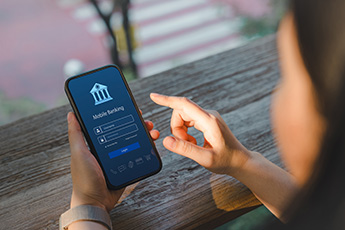Scientists are working hard to reverse paralysis, which affects an estimated 5.4mm people. Through a device that is smaller than a postage stamp and sits on the brain's motor cortex, scientists hope to wirelessly communicate with electrodes placed below an injured area of the spinal cord. They call this a "neural bypass" and have had success testing it with animals and even a quadriplegic middle-aged man, most recently. Imagine the possibilities around mobility if this all works out as scientists hope.
While certainly not as interesting as that sort of breakthrough, bankers are dealing with their own issues around the mobility requirements of small and mid-sized businesses. Here, an FIS study finds these customers want more mobility and flexibility in person-to-person (P2P) payments.
The study found that despite the hype about P2P payments, only 12% of consumers reported making a P2P payment in the last 30 days. However, P2P payments are hot with small and midsized businesses (SMBs), as 40% of these customers reported using P2P to pay a vendor during the same period.
The data shows SMBs are hungry for digital solutions and are even willing to switch banks to get them. Case in point - 14% of SMBs switched banks in the last year, with startups and early lifecycle companies jumping ship at a much higher rate. These customers cited bank pricing and fees as the most significant factor for switching. Also, 29% cited referrals from other SMBs as a main reason for making a change.
Big banks have seen this SMB shift and are moving quickly to address it. In June, more than 30 major financial institutions launched a new P2P service called Zelle. It is aimed directly at non-bank offerings like PayPal, Venmo and others.
Certainly, providing P2P payment solutions are not only a means to stave off competition with other banks, but also with rivals in the non-bank arena. Traditional banks are only slightly maintaining an edge in this area over competitors such as Square Cash and PayPal. Also, while 40% of SMBs say they are using their bank's P2P capabilities, another 37% say they are utilizing an outside non-bank P2P service so the race is on.
For banks, this may mean losing out on potential fees to keep customers and stay deeply embedded in the payments space. In fact, 48% of SMBs say they are willing to switch banks for this reason. Further, digital payments jumped to the 8th most important attribute for respondents vs. 12th in the previous 2Ys of the study.
Clearly, person-based payments are critical in appealing to digital native 20- and 30-something prospects. These customers love the flexibility of such platforms. In fact, this age cohort makes 2x the number of P2P transactions as their generational counterparts.
Offering P2P payment solutions may also give your SMB customers another reason to actively use your digital services. Look no further than the report analysis that found only 18% of SMB customers at community banks use their bank's mobile offerings vs. a whopping 76% at the top 50 banks. This, despite the fact that community banks' SMB customers report being much more satisfied with their mobile payment and banking options than those who bank with big financial institutions.
For community banks that do not yet offer P2P payments for SMB customers, experts say it's important to: 1) pay attention to the age and business category of these businesses, and their potential need or desire for mobile person-to-person payments; 2) consider the attitudes and changing demographics of your business customers; 3) define a strategy that takes into account the cost, flexibility and necessary resources required by various offerings; 4) review P2P options available in the market and 5) plan how your bank might most efficiently and effectively market a P2P service to SMB customers.




